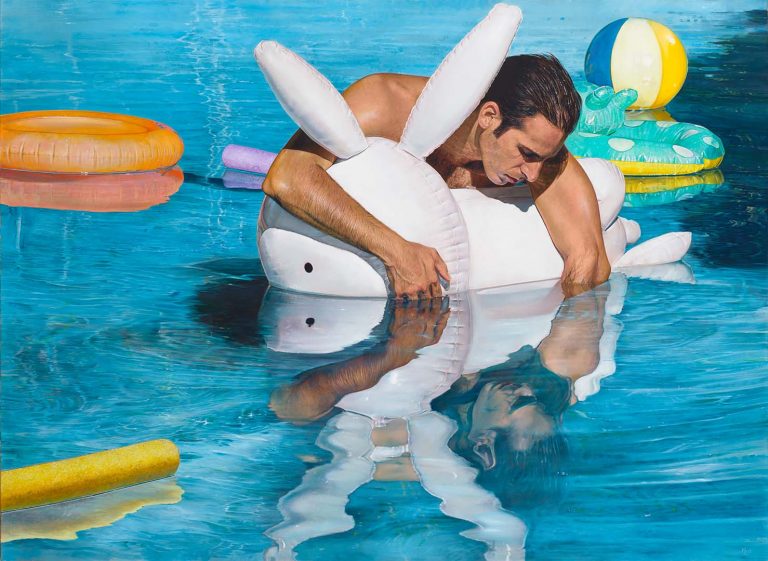We acknowledge the Traditional Owners of the land on which the Queensland Art Gallery | Gallery of Modern Art stands and recognise the creative contribution First Australians make to the art and culture of this country.

Michael Zavros / Australia b.1974 / Bad dad 2013 / Oil on canvas / 110 x 150cm / Purchased 2016 with funds raised through the Queensland Art Gallery | Gallery of Modern Art Foundation Appeal / Collection: Queensland Art Gallery | Gallery of Modern Art / © Michael Zavros
Michael ZavrosBad dad 2013
On Display: GOMA, Gallery 1.1
Bad dad captures a contemplative and complicated moment in which Michael Zavros has cast himself as a contemporary version of the protagonist from Caravaggio’s Baroque painting Narcissus c.1597–99.
Viewers are easily enticed by the languid world of this impressive self-portrait. Bad dad is an outstanding example of Zavros’s talents as a figurative painter and astute observer of social conditions. In this painting, Zavros describes himself in oils as someone who looks deeply into the range of emotional experiences associated with materialism.
This imagery produces a sense of longing — for travel, for luxury and for the past, and also simply for beauty. Zavros is drawn to beauty almost as a subject in itself, and the hyper-realism of his paintings intensifies the allure of his subjects. His use of unnatural colour, however, increases the distance between the viewer and the places he depicts.
Michael Zavros was born in Brisbane in 1974 and grew up on the Gold Coast. He graduated from Queensland College of Art, Brisbane, with a Bachelor of Visual Arts in 1996. Zavros is celebrated for his realist paintings of luxury items and decadent settings. Zavros often reproduces photographs as paintings, for instance, historical interiors and gardens from photographs in books. He currently lives in Brisbane.
Discussion Questions
1. Why do you think Michael Zavros titled his painting Bad dad?
2. Compare Bad dad with Caravaggio’s Narcissus c.1597–99. What are similarities and differences between the two?
Activities
1. Explore how your reflection changes in different surfaces, such as from in a mirror to the hood of a car, or from a bowl of water to the back of a spoon. Use three words to describe how your reflection looks on each surface.
2. Try this drawing exercise created by the Children’s Art Centre called ‘All about me. ME! It’s me!’